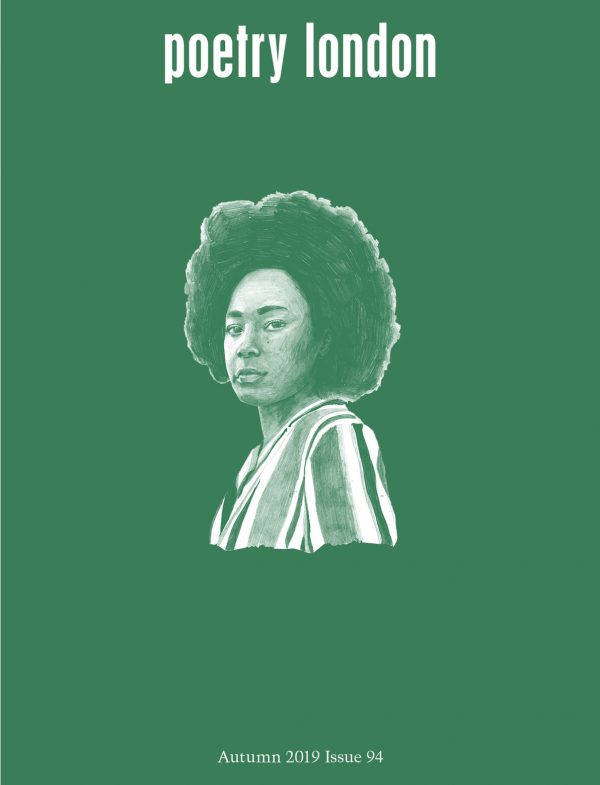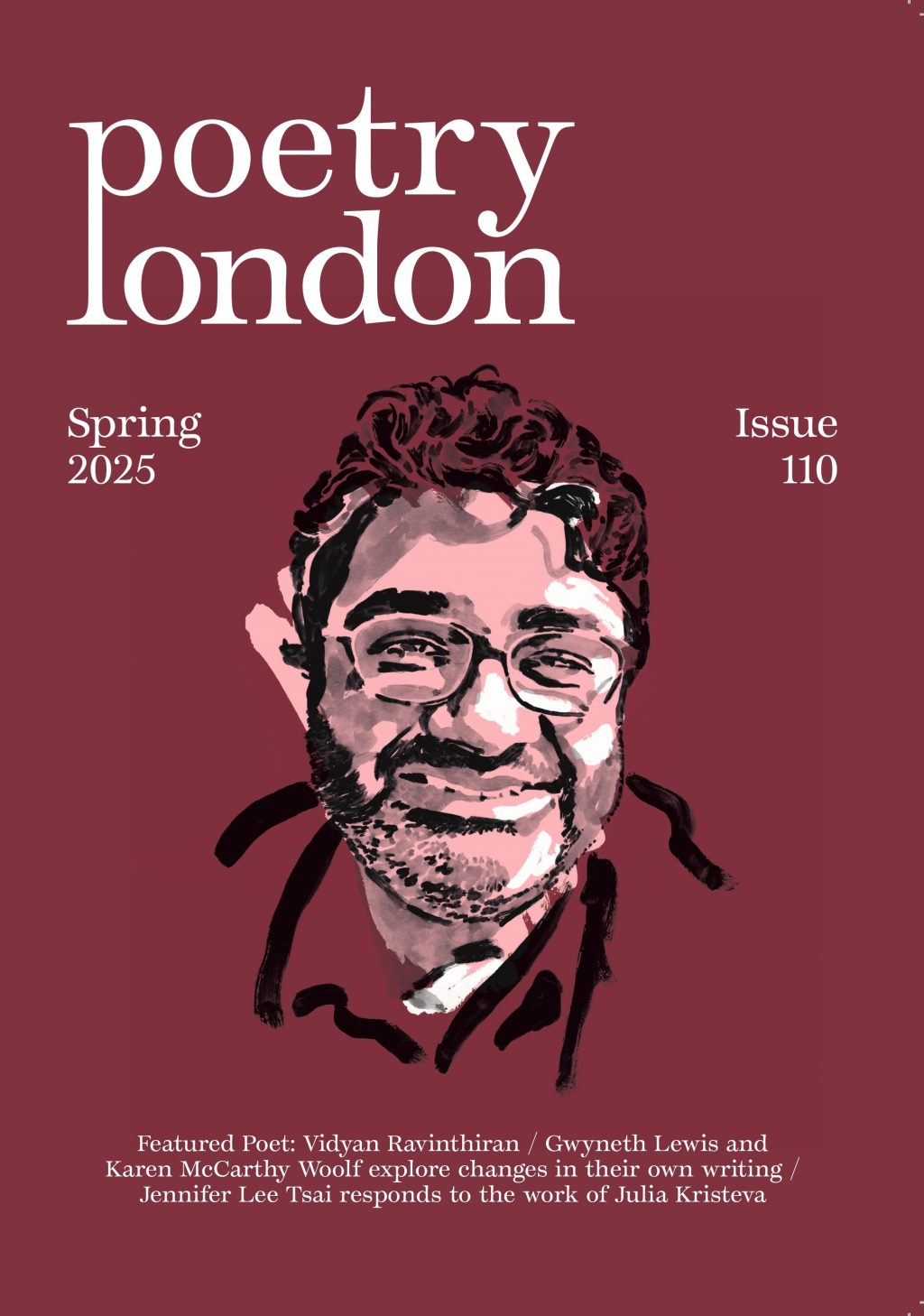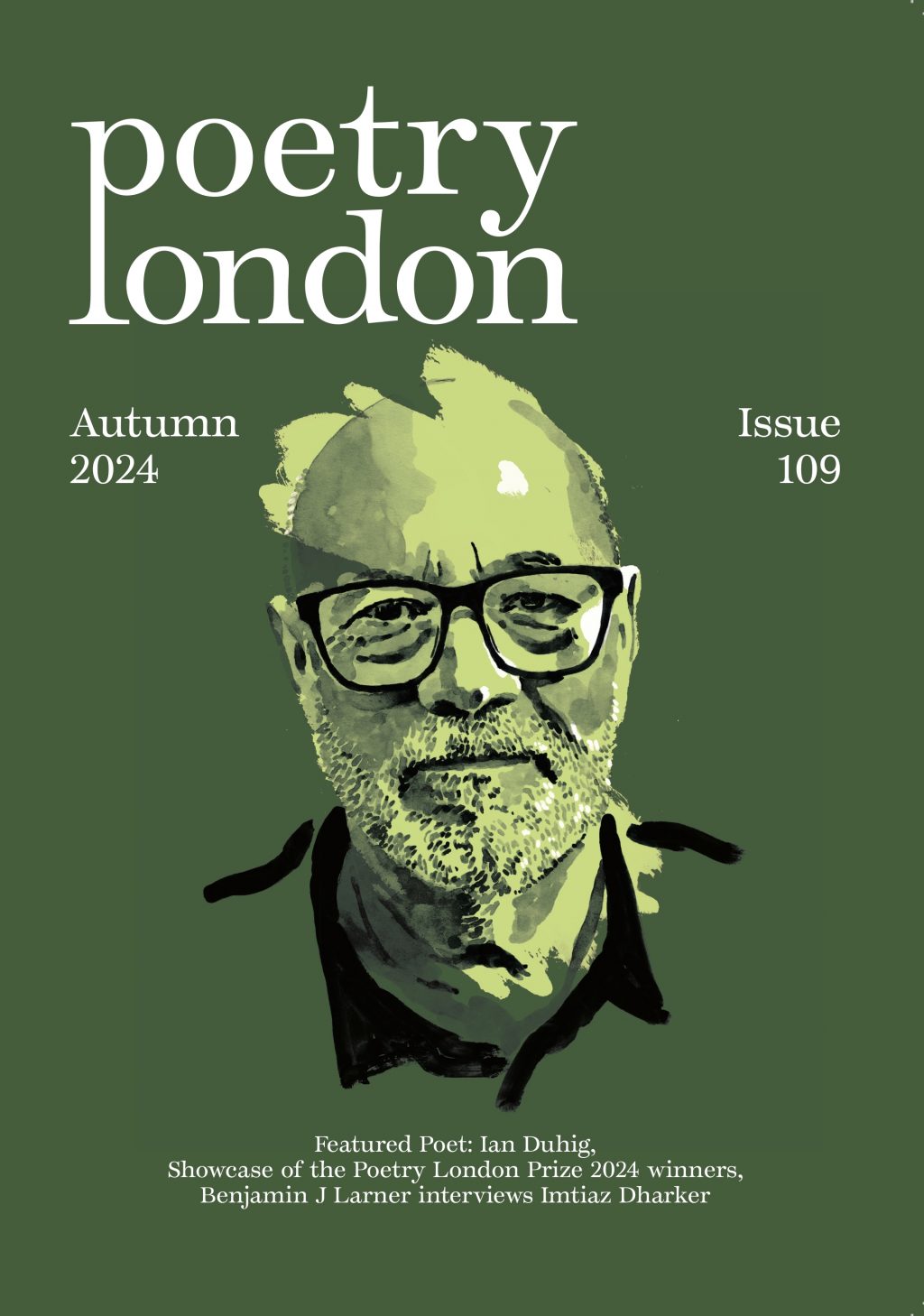Not a Secret Power
Nisha Ramayya outlines the political stakes in poetry at the intersection of feminism and the occult
Francesca Lisette sub rosa: The Book of Metaphysics Boiler House Press £10 MacGillivray The Gaelic Garden of the Dead Bloodaxe £12 Rebecca Tamás Witch Penned in the Margins £9.99
In the introduction to Spells: 21st Century Occult Poetry, (Ignota, 2018) edited by Sarah Shin and Rebecca Tamás, So Mayer traces various relationships between poetry and occultism, refusing to begin with ‘the Word’. This is a refusal of heteropatriarchal origins and dominant narratives; a refusal of the dominance of the written word, and, perhaps, a delinking of knowledge and vision (revelation as that which is seen); a refusal, indeed, to begin anywhere other than with refusal itself: ‘No.’ Mayer emphasises poets who refuse to be silenced, to be afraid, to be isolated, and celebrates the anthology as a space for bringing ‘feminist, queer, decolonial, dis/abled’ voices together and enabling encounter and connection between writers and readers. Mayer does not offer any singular definition of occultism, but goes down multiple paths, dwelling with witches, spells and hexes (conjuring with ‘the right words’), feminist thought and practice, chanting and enchantment, sociality and care, trauma and healing, naming and self-determination, and survival against the forces of historical violence. Mayer repeats the claim that neither poetry nor magic is an escape. Survival is not an individual pursuit, and magic is certainly not a stimulant for bourgeois wet dreams, nor some secret power for the privileged few. In centring these marginalised voices in Spells, Mayer locates their study of poetry and occultism in radical politics and alongside the people whose survival is truly at stake in rituals for ‘transformative resurgence’. At this point in the review, I should mention the inclusion of my work in Spells and come forward as a fellow occult poet; the questions and concerns raised below trouble and motivate me as reader and writer, and I am grateful to all the named poets for their work and for creating a sense of community within which to think and practice differently together.
Francesca Lisette’s sub rosa: The Book of Metaphysicsis a book in three sections – ‘I’, ‘Becoming’, ‘Ecstasy (Dispersal)’ – that announces its relationship to the occult in the title: ‘under the rose’ signifies private or secret gatherings, discussions, and activities. However, the metaphysics in this book are an open secret; while there are many complex phrases, images, and references that require deep thought if not further reading, Lisette provides readers with hints and tips, from recommended writers and artists (including John Wieners, Anna Mendelssohn and Bhanu Kapil) to the generous list of methods used in the composition of ‘Ecstasy (Dispersal)’: ‘meditation, crystal work, somatic experimentation, yoga, dance and vocal exercises, group massage, trancing, friendship, cooking, walking and ritual’. These methods indicate Lisette’s approach in terms of multiplicity and sociality. Questions of ownership and entitlement emerge (‘I break into the house of appropriation & / steal its symphonic furniture’, declares ‘From Those Whose Wounds Beauty Springs’), recalling women writers’ understanding of feminist poetics in terms of ‘stealing the language’ as well as current discourses about cultural appropriation and colonial expropriation. In ‘Deceit & Habitat’, Lisette suggests the importance of asking these questions while holding onto the possibilities for solidarity in difference, otherwise ‘poetic guilt wobbles to a mass & disables / the pronoun “we”!’ Acknowledging guilt might follow the acknowledgment of privilege, but it is part of the process, not the end-point: ‘Eliminate the grievous conscience of bourgeois life’.
Lisette urges an embodied knowledge that resists dominant narratives about reason, progress, and scientific determinism, while admitting their influence and ability to cause pain: ‘There are some things you can’t get from books / you can only get in bodies’ (‘Deceit & Habitat’). The notion that ‘the body knows’ is inextricable from the gendered, racialised, and de/naturalised histories that determine what it means to have or be a body, to know or claim knowledge. Lisette asks what it means to be categorised as a woman and identified with womanhood, and what that has to do with embodied knowledge and lived experience. Further, how are those complex concepts formed, distorted, and transformed by literary constructions and representations of womanhood? ‘Becoming’ begins:
All great female literature is the fiction of becoming. the second in front of me is spattered with blood from the last. because it is my mother. what can be reaped from a rejected ancestral body is consistently refused to know.
The titular rose becomes a symbol of the literary construction and representation of women and women’s bodies, even a symbol of biological essentialism, which Lisette refuses, understanding that biology itself is a dominant narrative constituted by historical violence: ‘Cornered by silence of a masked robbery – the ransacked / historical, I mean, NATURE’ (‘II’). Lisette asks how poetry can acknowledge the blood-spattered history of gender that continues into the present, and suggests open-ended processes for undoing violence, repairing the damage that has been done to bodies, reimagining and re-experiencing bodies by means of the methods listed above. In the final section, Lisette shares notes taken after a bath with crystals and a recording of Kapil, suggesting a way towards healing via a holistic approach to embodied knowledge, occultism, and poetry: ‘Process says, I just am, & look at me be. / Process is participatory: there is space for you.’
MacGillivray’s The Gaelic Garden of the Dead is a process-driven book, which might be set in contrast to Lisette’s approach in terms of its closedness, its steady movement towards a predetermined end. In this book, also in three sections, the poet gives voice to unnamed unnumbered dead Scottish Highlanders and Mary Stuart, Queen of Scots, who is described as a victim of ‘political assassination’ and participant in her own martyrdom. The first section’s epigraphs suggest the book’s relationship to the occult: the notion of ‘knowledge without study’ in a seventh-century Irish text; the occult practice of raising the dead in order to discover some ‘hidden treasure’ (perhaps via prosopopoeia); and a dispossessed eighteenth-century Highland woman prophesying the downfall of her invader through the language of trees:
This tree will flourish high and broad Green as it grows today, When from the banks o’tbonnie Dee Clann Fhionnlaidh’s all away.
These epigraphs provide guidelines for reading the poetry, and MacGillivray provides a fuller explanation in the concluding note (each section of the book includes epigraphs and notes, which encourages a non-linear reading experience). James Frazer’s study of ‘the Gaelic alphabet of trees or the Irish tree Ogham currently in use in Scotland’ suggests a ‘meta-narrative’ to MacGillivray, according to which trees act as ‘a receptacle for the life-force of the language itself when faced with constant demise’. In ‘Ogham Confessions’ from ‘Straif – Blackthorn’, MacGillivray writes:
O zodiacal tree of curse I was alive in the era of voice, Grown as moss on the skull of tongues.
Trees – like stars – can be interpreted by people for their own ends; deaths, downfalls, and wars can be read in the colour of leaves and the twists of branches and roots (think of Birnam Wood in Macbeth). At the same time, trees are not simply read and inscribed upon, they also speak and resound with their own agency at the very edges of human consciousness, in a manner comparable to the position of Gaelic in Scottish cultural consciousness – peripheral and ever-present, living and dying.
In the third section, MacGillivray writes thirty-five sonnets in the voice of Mary Stuart, plus one cut- up/chewed-up version of the sonnets. There are thirty-five
in total, one for each of the steps Mary descended to her death; to make the cut-up, the sonnets were chewed for fifteen minutes for the number of minutes Mary’s lips moved after decapitation. It is impossible to read this book outside death’s dominion. In the epigraphs, poetry, and notes, MacGillivray builds an awesome structure like Mary’s ‘execution scaffold’, imbricating the language of trees – MacGillivray’s suggestion that trees and stars were complicit in ‘constructing the apparatus of [Mary’s] death’, her reproduction of Mary’s imprisonment using the sonnet form, and the notion that ‘belle rebelle’ Mary could steal small freedoms in writing poetry and devising intricate coded systems to evade her enemies’ interpretations. However, in a poetry located in the expansiveness of Scottish myth and history (with forays to England, Ireland, and France), there is paradoxically very little space for movement; in a poetry of multiple voices, there is very little room to breathe. Occasionally MacGillivray introduces a detail that seems to burst in from elsewhere, as the poetry admits to an outside. For example, take the ‘sophisticated imports of substances such as cochineal’ that transformed ‘indigenous dye culture in the Highlands’ – ‘sophisticated’ being a curiously euphemistic description of early-modern transatlantic trade. Such details might be read as deliberate slips or structural flaws. In betraying the global and colonial histories that are fundamental to Scottish history, these solecisms implicate the peripheral and ever-present nature of these histories in relation to dominant narratives of Scottish history.
Rebecca Tamás’s Witch is a collection of spells, hexes, songs, fantasies, and interrogations recalling witch trials in early-modern Europe. Centring women’s narratives, Tamás’s project could be described in terms of mythic remaking insofar as the witch is a character that borrows (or steals) historical and literary sources, conflating and adapting multiple depictions of rebellious women (predominantly witches, suffragettes, sex workers, women who provide abortions) into a singular witch who transcends history and geography. At the same time, the book is situated in a heteropatriarchal Christian, European, and English context; the witch has sex with the devil and a sweet and spends time with a lowly petrol station boy; she thinks about Christ’s resurrection while eating the devil’s salad (a fresh and strangely moving twist on #womenlaughingalonewithsalad); she is desperate to know about god, she goes to church regularly, and even though it makes her feel ‘bored and sick’, still she goes.
Like the open secret of Lisette’s metaphysics, and the helpful explanatory notes in MacGillivray’s book, Tamás’s poetry invites readers in. Witch does not name its sources, but many of them poke out of the surface of the text (such as Silvia Federici) and may be gleaned by curious readers. The writing style is remarkably friendly and frank for a book that contains, for example, a hex for removing penises; a serial castrator child-bride; a violently surreal image of ‘women’s bellies [popping] open ripe melons / of meat onto the cobbles’ (‘WITCH EUROPE’); and, in ‘spell for agency’, a violently decontextualized image of ‘a lot of murdered sex workers / in a drama-documentary about / murdered sex workers’ that calls attention to the commodification and circulation of such images in mainstream media and, subsequently, the documentary producers who profit from brutalised and murdered bodies. The raging witch takes revenge in repeated fantasies of destruction and self-discovery by fire (‘just wait until the / drinks are being served and then set fire / to the whole place’, says ‘/penis hex/’), which many readers might find vicariously satisfying; these are fantasies of revolution, after all. The witch enjoys nice things ‘in the traditional sense of nice’ – mint silk pantsuits, coconut-pecan muffins, ‘fiestas and shaded cupolas’ – and in less traditional senses. Tamás’s abundant descriptions of the witch’s erotic communions with the great and small natural world suggest that she would not want for ways to enjoy herself after the revolution, when the nice things have to go.
There are different interpretations of the demonstrative style, the simplest being that in giving voice to the witch, Tamás recovers her from occultism, from hiding and secrecy, and makes her manifest, obvious, and visible. Indeed, there is much emphasis on light and vision in this book:
the light tells me something
(‘spell for mysticism’)
the witch spent the whole time forcing her eyes to stay open
(‘WITCH TRIALS’)
the witch can love light unexpected the witch can feel it
(‘WITCH FIRE’)
you’ll die and you’ll never see one single thing that she has seen
(‘spell for maths’)
Violence, destruction, self-discovery, and visibility are all aspects of a feminist project, although there are questions about how these aspects relate to each other; for example, covertness and fugitivity may be necessary for radical political action, depending on the status of your citizenship, experience of policing and criminalisation, skin colour, caring responsibilities, and so on. The devil asks the witch ‘are you prepared / to destroy yourself / for freedom’ (‘WITCH AND THE DEVIL’), a serious question that is complicated and compounded by So Mayer’s notion of the ‘broken open’ in occult poetry, voiced by the already broken ones, the not-by-choice open ones: ‘Break open the walls, the distance between writer and reader by taking the words into your body, your history. Let them break you open as, together, we enter this unknown country, this decentred centre, this intention to save our lives.’
Nisha Ramayya grew up in Glasgow and is currently based in London. Her debut collection States of the Body Produced by Love is out with Ignota Books in September 2019.


